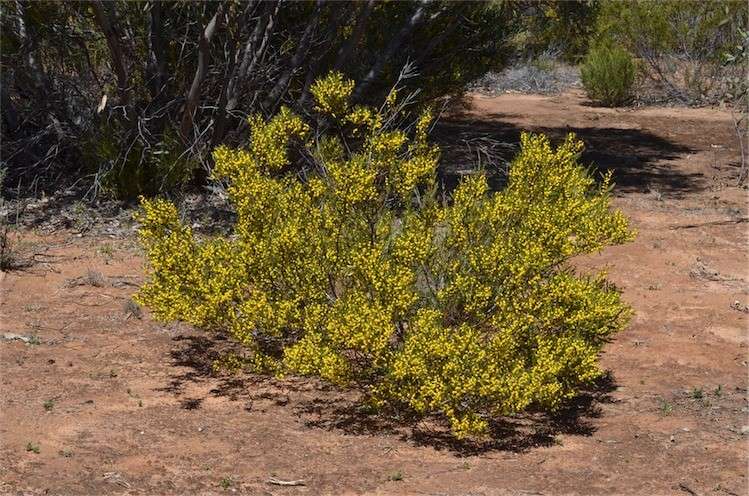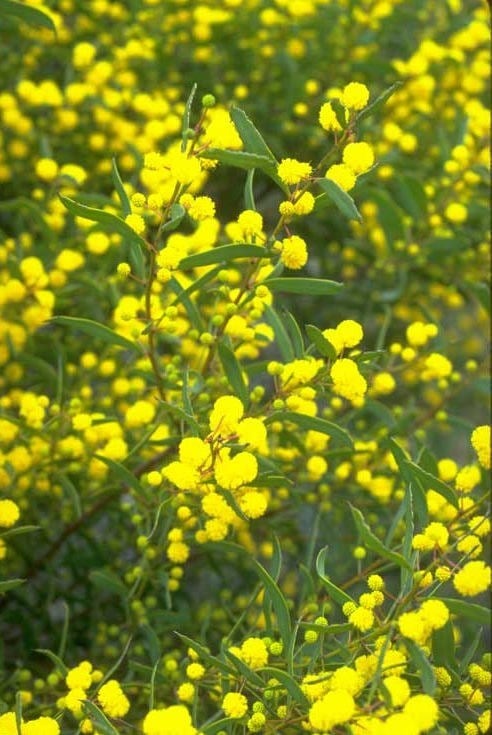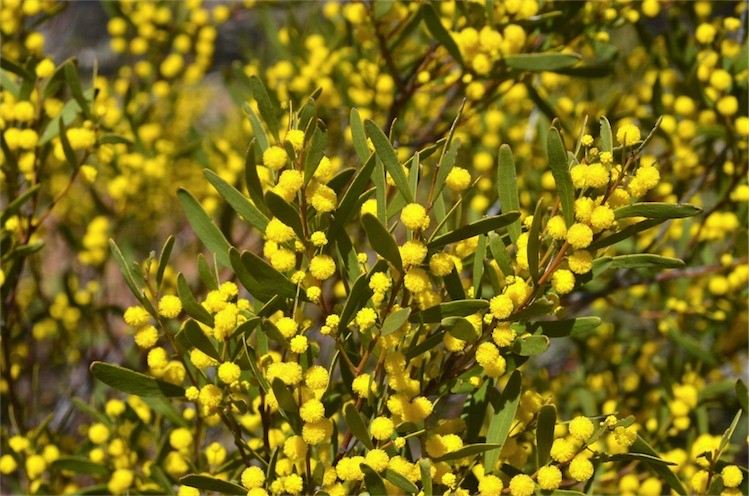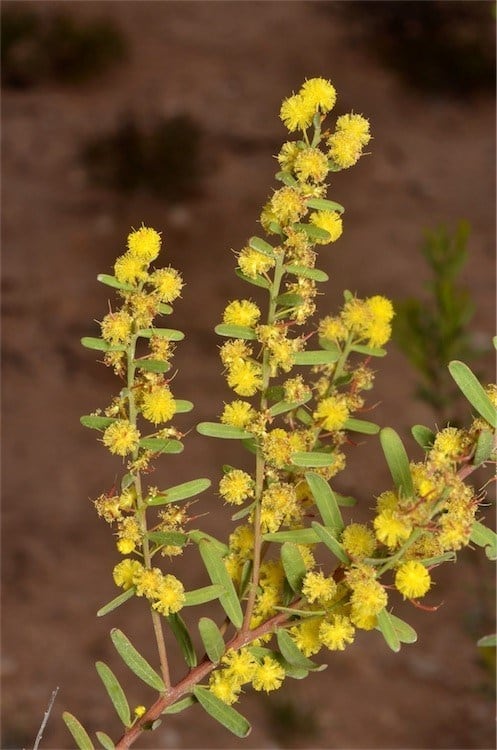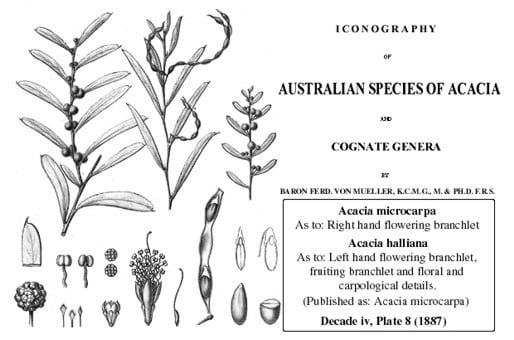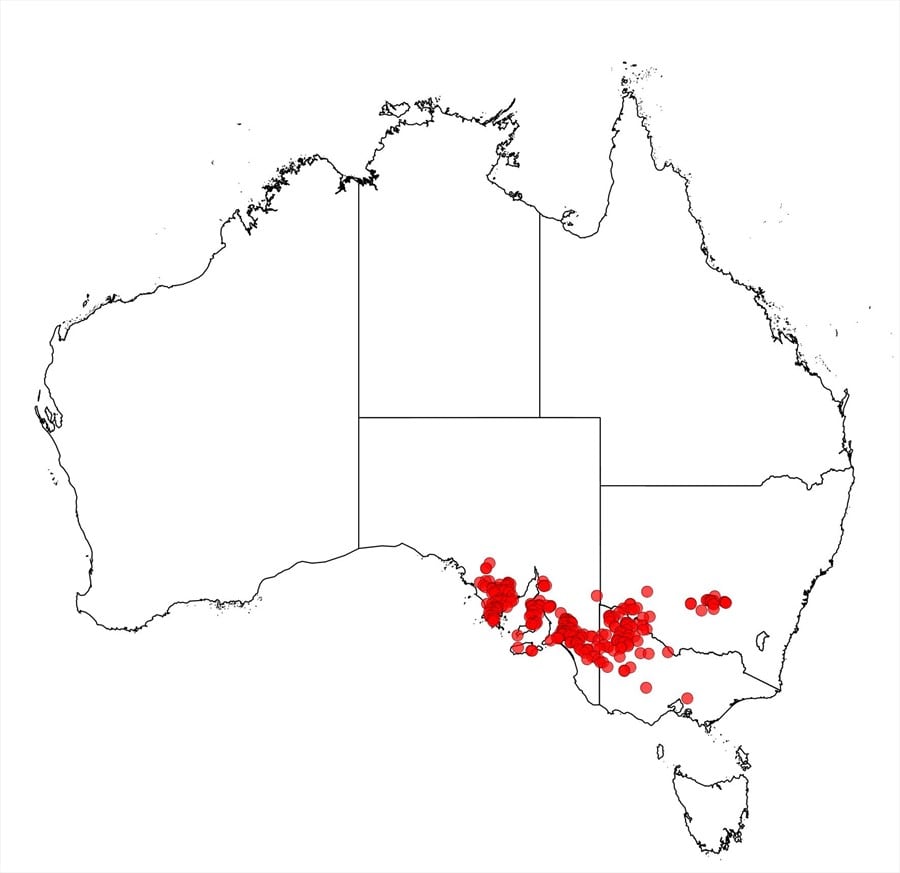Acacia microcarpa F.Muell.
WATTLE
Acacias of Australia
Common Name
Manna Wattle
Family
Fabaceae
Distribution
Occurs in SE Australia from the Eyre Peninsula near Wudinna, S.A., E to Mallee Cliffs Natl Park, N.S.W., and to Gunbower, Vic., with an isolated occurrence farther E in N.S.W. in the Goolgowi–West Wyalong area.
Description
Glabrous shrub to 2.5 m high. Branchlets somewhat angled at extremities. Stipules insignificant. Phyllodes normally oblanceolate, sometimes oblong-oblanceolate, elliptic or elliptic-oblanceolate, straight to shallowly incurved, (1.6–) 2–5.5 (–7) cm long, (3–) 4–10 (–19) mm wide with l:w = 4–10, obtuse but frequently obliquely so, often retuse, slightly thickened, smooth; midrib not prominent; lateral nerves absent or obscure; glands 2, with apical gland adjacent to mucro, and lower one near or below phyllode middle, 0.5 mm long and normally shallowly concave. Inflorescences rudimentary 1-headed racemes with axes c. 0.5 mm long, 2–5 per node; peduncles 4–10 (–12) mm long, drying yellow or blackish; heads globular, 14–25-flowered, bright mid-golden. Flowers 5-merous; sepals free. Pods linear, prominently raised over seeds, slightly to prominently curved, to 8 cm long, 2–5 mm wide, firmly chartaceous. Seeds longitudinal, elliptic to widely elliptic-oblong, 3–4 mm long, subnitid, dark brown; aril ±clavate, 1/4–1/3 length of seed.
Habitat
Found in a variety of vegetation formations and soil types.
Specimens
S.A.: Wudinna, R.H.Kuchel 3302 (AD, PERTH); between Cambrai and Sedan, D.J.E.Whibley 4474 (AD). N.S.W.: 5 km NE of Goolgowi, G.M.Cunningham 3347 & P.L.Milthorpe (NSW, PERTH). Vic.: Big Desert, 21 km N of Broken Bucket bore, M.G.Corrick 6344 (MEL, PERTH); Gunbower, Oct. 1913, Anon. s.n. (MEL1500691).
Notes
Acacia halliana was formerly included within this species, fide B.R.Maslin, Nuytsia 6: 35–46 (1987). Bentham’s description in Fl. Austral. 2: 357 (1864) contains elements of both species as does the Mueller illustration which is cited above.
Similar to A. praemorsa which has much narrower phyllodes. Short phyllode forms (i.e. c. 2 cm long) may resemble A. triquetra which has branchlets more obviously angled, phyllodes usually with only an apical gland and straight to shallowly curved pods. Short phyllode forms may also resemble A. acinacea.
Acacia microcarpa together with A. acinacea, A. imbricata, A. praemorsa and A. triquetra comprise the ‘A. microcarpa group’; see B.R.Maslin, Nuytsia 6: 39 (1987) and P.Lang & B.R.Maslin, J. Adelaide Bot. Gard. 13: 118 (1990). Putative hybrids between A. microcarpa and A. triquetra occur on the Eyre Peninsula.
FOA Reference
Data derived from Flora of Australia Volumes 11A (2001), 11B (2001) and 12 (1998), products of ABRS, ©Commonwealth of Australia
Author
Minor edits by B.R.Maslin & J.Rogers
B.R.Maslin
This identification key and fact sheets are available as a mobile application:
URL: https://apps.lucidcentral.org/wattle/
© Copyright 2018. All rights reserved.
